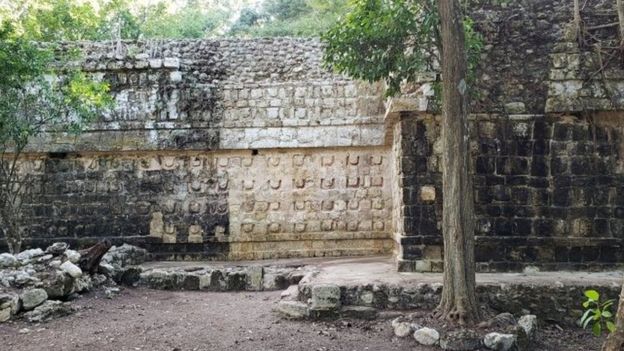(UTV|COLOMBO) – Archaeologists in Mexico have uncovered the ruins of a large palace they believe dates back to the height of the Mayan civilisation, 1,000 years ago.
Remains of a building six metres (20ft) high, 55m long and 15m wide were found at a dig on the site of the ancient city of Kulubá in Yucatán state.
It is thought the structure was used over two periods of Mayan history as far back as 600 AD.
The Mayan civilisation flourished before Spain conquered the region.

In their time, the Mayans ruled large stretches of territory in what is now southern Mexico, Guatemala, Belize and Honduras.
The palace was possibly in use during two periods of Mayan history, the National Institute of Anthropology and History (INAH) said: the Late Classic (600-900 AD) and the Terminal Classic (850-1050 AD).
As well as the former palace, archaeologists are exploring four structures in Kulubá’s central square: an altar, remnants of two residential buildings and a round structure thought to be an oven.
“This work is the beginning, we’ve barely began uncovering one of the most voluminous structures on the site,” archaeologist Alfredo Barrera was quoted as saying by Reuters news agency.
Because of concerns about damage from wind and sun to the exposed site, near the popular Caribbean resort of Cancún, conservationists are considering reforesting parts of Kulubá.
(Courtesy – BBC)
[alert color=”faebcc” icon=”fa-commenting”]Keeping up to date with breaking news while you are on the move is now simple with UTV Alerts [textmarker color=”8a6d3b”]Type REG UTV and send to 77000[/textmarker] on your Dialog, Airtel, or Hutch mobile connection[/alert]

